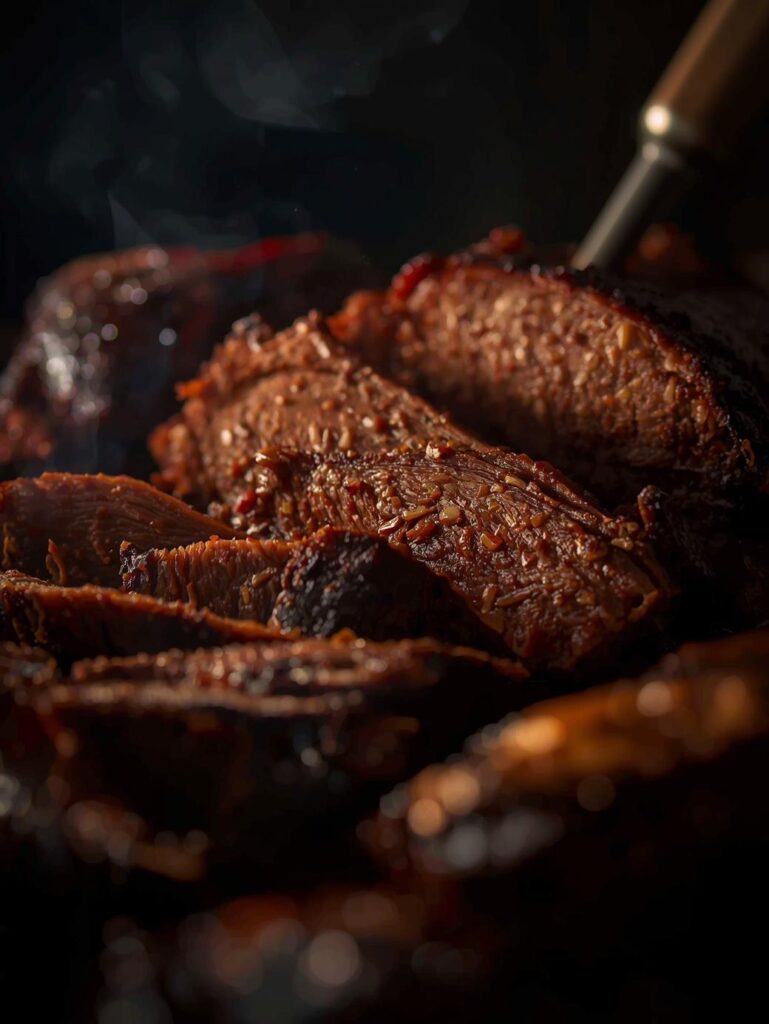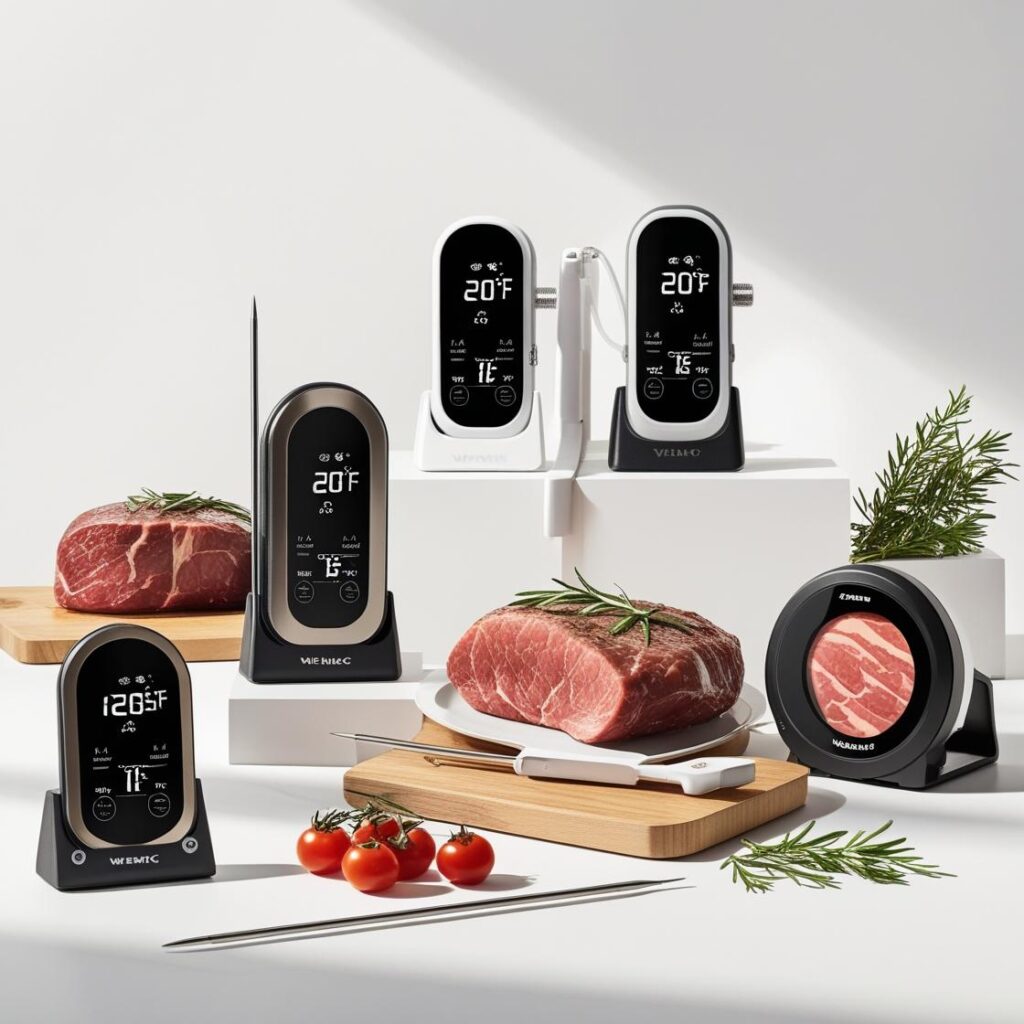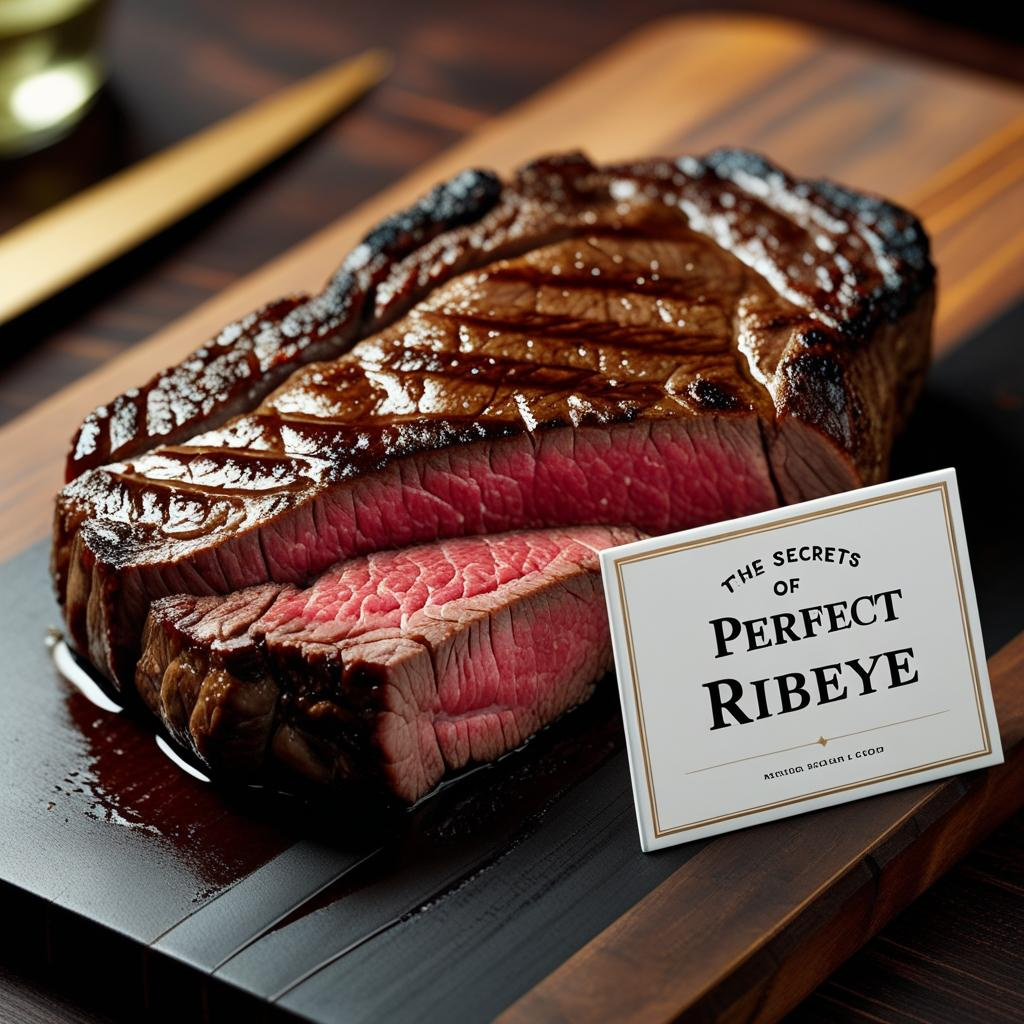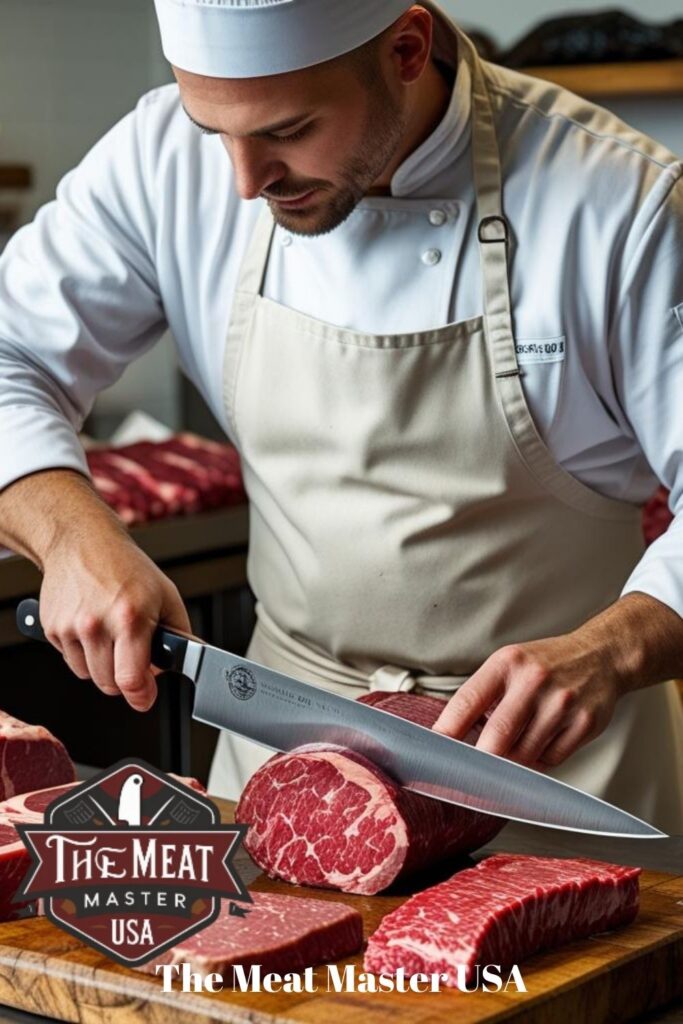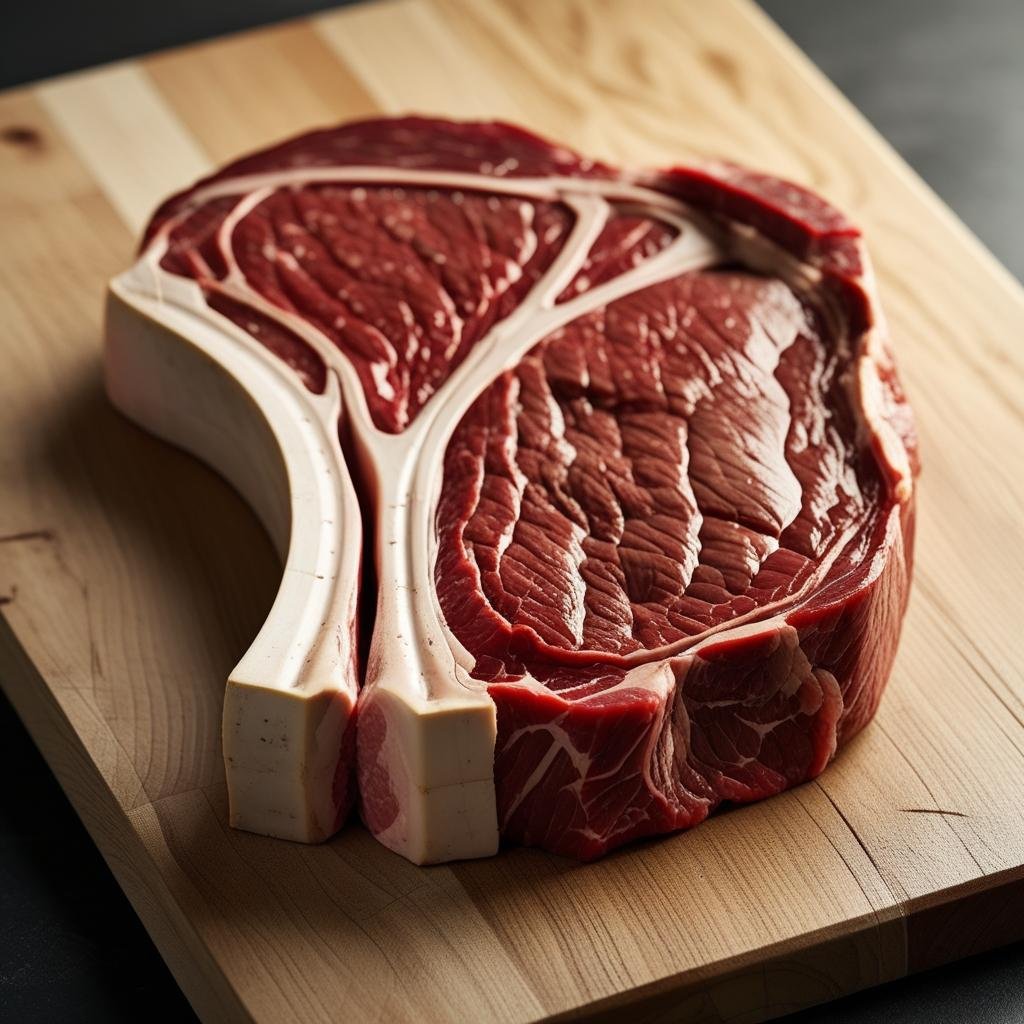What Makes Texas Brisket Different From Everyone Else’s
When people talk about the greatest barbecue in the world, the conversation inevitably turns to Texas brisket. Its reputation is legendary, and for good reason. While other regions focus on sugary sauces, complex rubs, or specific cuts of meat, the art of Texas BBQ is a study in elegant simplicity. The magic of a perfectly cooked Texas style brisket isn’t found in a secret ingredient; it’s found in a profound respect for the meat itself.
This guide will unlock the secrets of authentic Texas brisket. We’ll break down the core philosophy, the simple but crucial techniques, and the reasons why a true smoked brisket from Texas stands alone in the world of barbecue. You’ll learn what sets a great Texas brisket apart from all the rest.
The Core Secret: It’s All About the Meat
The central tenet of Texas BBQ is that the meat is the star of the show. Everything else—the rub, the smoke, the cooking temperature—is there to support and enhance the natural flavor of the beef, not to mask it. This philosophy is most evident in the way Texans treat their brisket: with a simple, straightforward approach that highlights the beef’s inherent quality.
The Texas Trinity: Meat, Rub, and Smoke
In Texas, the formula for great barbecue is often referred to as the “Texas Trinity”: the meat, the rub, and the smoke. Mastering these three components is the key to an authentic Texas brisket recipe.
The Rub: Salt and Pepper is All You Need
While other regional styles use elaborate rubs with dozens of ingredients, a classic Texas brisket rub is remarkably simple. It consists of two ingredients: coarse black pepper and coarse kosher salt. The ratio is typically 1:1, but many pitmasters have their own slightly tweaked versions.
- Why It Works: The simplicity of the rub allows the rich, beefy flavor of the brisket to shine through. The coarse grind of the pepper and salt creates a peppery, flavorful “bark” that is a hallmark of Texas style brisket. It’s a bold choice that demonstrates a confidence in the quality of the beef.
- Actionable Tip: When applying the rub, be generous. Cover the entire surface of the brisket, pressing the rub into the meat. The coarse texture of the salt and pepper will create an incredible crust during the long cook.
The Smoke: Post Oak is a Must
The choice of wood is a defining characteristic of Texas BBQ. The preferred wood for a true smoked brisket is post oak.
- Why It Works: Post oak provides a clean, mild smoke that doesn’t overpower the beef. Unlike stronger woods like hickory or mesquite, post oak adds a subtle, earthy flavor that complements the beef rather than dominating it. This is why Texas brisket is so prized—you taste the beef, not just the smoke.
- Actionable Tip: Use a combination of lump charcoal for heat and a few chunks of post oak for smoke. The goal is a steady, “thin blue smoke,” which is a sign of a clean, consistent burn.
The Temperature: Low and Slow is the Law
The cooking method for a Texas brisket is all about patience. The brisket is cooked at a low, consistent temperature for a long period of time.
- Why It Works: The brisket is a tough cut of meat, full of connective tissue and fat. A long, slow cook at a low temperature (typically between 225-275°F) is what allows this tough collagen to break down into gelatin. This process is what transforms the brisket from a tough cut of beef into a tender, juicy masterpiece.
- Actionable Tip: Maintain a consistent temperature. A great smoker with good temperature control is a must. If you’re using a less-than-perfect smoker, you must monitor the temperature constantly. We cover the importance of this in our guide on everything you need to know about grill maintenance.
Step-by-Step Guide to Cooking a Texas Style Brisket
Making a great Texas style brisket is a marathon, not a sprint. Follow these steps for success.
- Select Your Brisket: Start with a high-quality, USDA Prime or Choice brisket. A good brisket will have an even layer of fat and a good amount of marbling. For more on this, check out our guide on what nobody tells you about buying meat for grilling.
- Trim the Fat: Use a sharp knife to trim the hard fat cap on the brisket. Leave about 1/4 inch of fat on the point (the thicker end). The fat will render and keep the meat moist.
- Apply the Rub: Generously coat the entire brisket with a simple Texas brisket rub of 1:1 coarse salt and black pepper.
- Set Up Your Smoker: Get your smoker to a consistent temperature of 250°F. Use a combination of lump charcoal and post oak chunks.
- Place the Brisket: Place the brisket fat side down on the smoker grate. This will protect the meat from the direct heat below and allow the fat to baste the meat as it cooks.
- The Stall: After several hours of cooking, the brisket’s internal temperature will stall around 150-165°F. Don’t panic. This is the moisture on the surface evaporating and cooling the meat.
- The Wrap: Once the brisket has pushed through the stall, wrap it in butcher paper. This will keep the moisture in, help the brisket finish cooking, and keep the bark from getting too dark.
- The Finish: Continue to cook the brisket until the internal temperature reaches 203°F. The brisket should be “probe tender,” meaning a thermometer probe slides into it with very little resistance.
- The Rest: Remove the brisket from the smoker and let it rest, still wrapped, for at least 1-2 hours. This is the most crucial step. It allows the juices to redistribute and the meat to become tender.
- The Slice: Use a sharp knife to slice the brisket against the grain. Slice the flat and the point separately.
The Final Verdict: Why Texas Brisket Stands Alone
The reason Texas brisket is so revered is that it’s a test of a pitmaster’s skill. There are no sauces to hide behind, no complex rubs to distract from a bad cook. The focus is on three simple things: high-quality meat, a perfect bark, and a tender, juicy texture. This dedication to simplicity is what makes a great Texas brisket so special.
FAQ: What Makes Texas Brisket Different From Everyone Else’s
1. What is a Texas style BBQ rub?
A Texas style BBQ rub is a simple mix of coarse kosher salt and coarse black pepper, usually in a 1:1 ratio. The coarse grind is important for creating a flavorful bark.
2. Do Texans use barbecue sauce on their brisket?
No. In Texas, the brisket is so flavorful that sauce is considered an unnecessary addition. A true Texas brisket is served without sauce, but sauce is often available on the side for those who want it.
3. What is the best wood for a Texas brisket?
The traditional and best wood for a Texas brisket is post oak. It provides a clean, mild smoke that complements the beef’s flavor without overpowering it.
4. Is a Texas brisket cooked hot and fast?
No, a Texas brisket is cooked low and slow. The temperature is typically kept between 225-275°F for 12-18 hours or longer, depending on the size of the brisket.
5. What cut of meat is used for a Texas brisket?
A full packer brisket is used. It consists of two muscles: the flat (the leaner part) and the point (the fattier part).
6. Why is a brisket so expensive?
A brisket is a large cut of meat, and it takes a long time to cook. The price of Texas brisket reflects the time, effort, and skill that goes into making it.
7. What does “probe tender” mean?
“Probe tender” is a term used by pitmasters to describe a brisket that is perfectly cooked. It means a thermometer probe or a skewer can be inserted into the brisket with very little resistance, like it’s going into a

